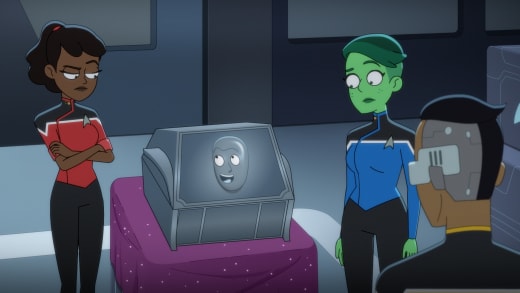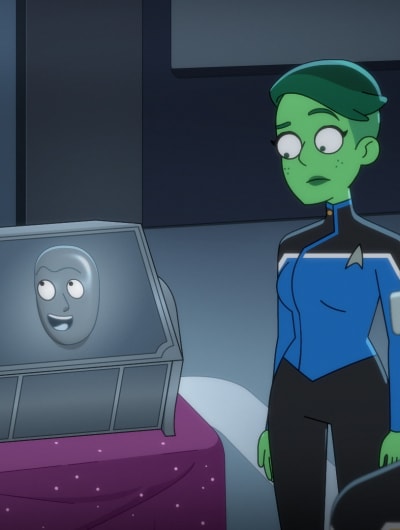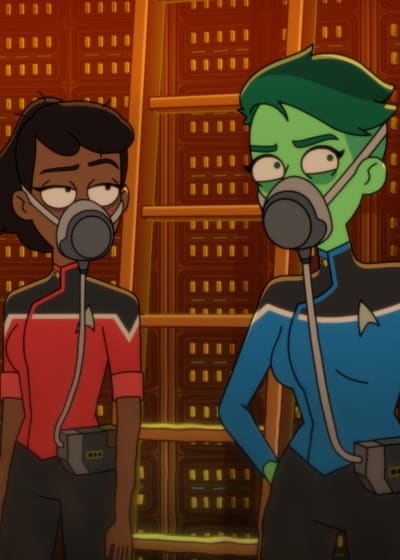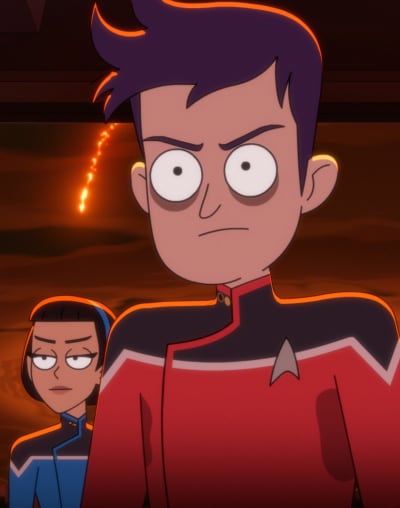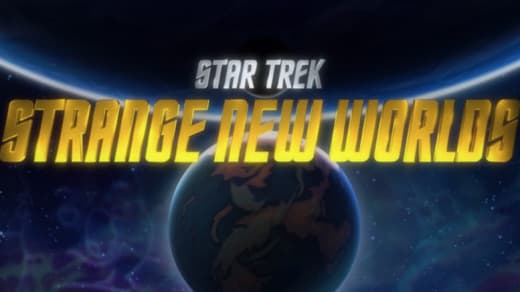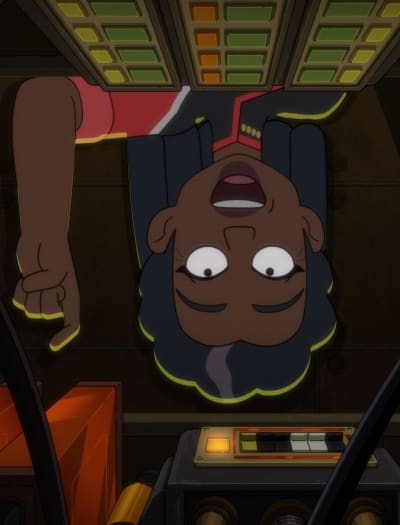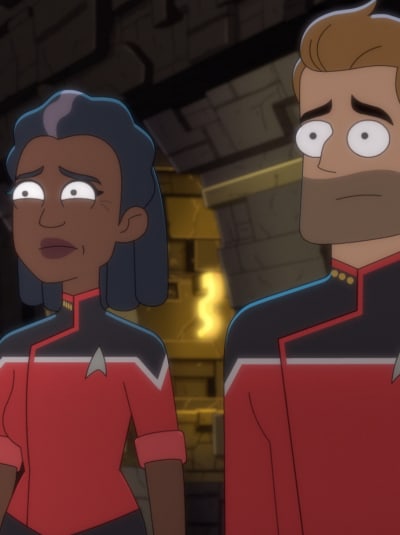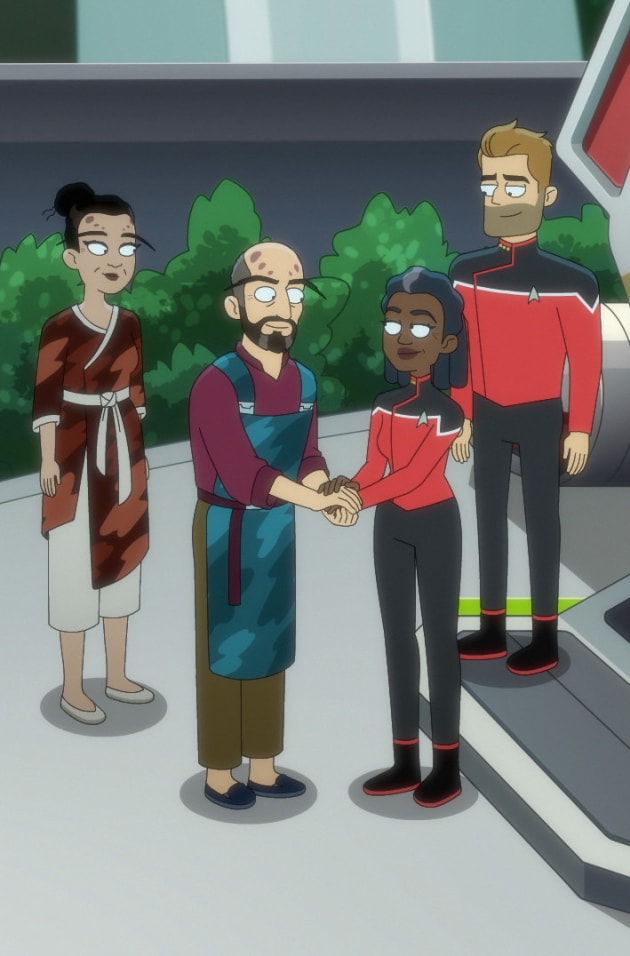
There are a lot of sci-fi tropes out there ripe for reimagining, and Star Trek: Lower Decks Season 4 Episode 3 does a solid job of defying our expectations on three fronts as the show continues to mine canon for schtick.
From the titular benevolent world-managing AI to Boimler’s first mission command to Beta Shift’s first rite of passage as lieutenants (junior grade), we bear witness to multiple moments of near disaster. And that single fatality.
The most exciting development is the introduction of the Anomaly Storage Room, a literal treasure trove of potential catastrophes. I’m unsure why the Cerritos isn’t dumping all that at Starbase One every chance it gets.
Much like when one moves house and discovers seventeen measuring tapes in various boxes when unpacking, the absurdity of Star Trek knick-knacks is never more apparent than when random McGuffins from a cross-section of franchise series are thrown together.
By using the Betazoid gift box (from Star Trek: The Next Generation Season 1 Episode 11) as a torture element to the already torturous experience of the Wadi Chula game (from Star Trek: Deep Space Nine Season 1 Episode 10), the Beta Shifters embed a deus ex machina inside a machina ex deus. Flippin’ brilliant.
It’s interesting that Tendi is the first person to cotton onto the fact they’re being hazed.
With Mariner’s jaded perspective on the hierarchy of Starfleet, we’d expect her to be the first to tell Dirks to shove his isolinear scans up his own chip junction.
Rutherford: What’s hazing?
Mariner: It’s a prank dressed up as team-building that nobody really likes.
Rutherford: Well, that doesn’t sound very Starfleet.
But maybe since her lightbulb moment with Ransom on Star Trek: Lower Decks Season 4 Episode 2, Mariner’s tapped into her more positive inner ensign.
She’s less an insubordination supernova and more a warm, fuzzy nebula of discipline.
Another sign that she’s grown as a character is the fact she didn’t insinuate herself into Boimler’s first mission as commander.
The old Mariner would’ve definitely insisted on overseeing baby bird Boimler’s first flight, helicoptering in at the first sign of indecision from our darling vineyard-raised Archer-wannabee.
This Mariner is ready to let him fly. And/or crash.
Tendi: I wonder how Boimler’s doing down there on his mission.
Mariner: Oh, he’s either doing great or super overthinking it and getting sweaty.
As it turns out, T’Lyn is pretty good at letting him carve his path while capable of course correcting when needs must.
Maintaining her position as my favorite Lower Decks character ever, T’Lyn proves you can be an analytical stick-in-the-mud and a decent team player.
And while she provides little comfort in her tactless statements of fact, when she provides empirical data to support the validity of Boimler’s promotion, you know she believes it.
But mostly, her trademark bluntness is a refreshing acceptance that some situations just aren’t worth getting emotionally invested in.
T’Lyn: Statistically, ensigns serving under recently promoted commanders are more likely to experience death and/or dismemberment.
Boimler: DEATH?
T’Lyn: Yes, and/or dismemberment.
Boimler’s encounter with the Divine Koala continues the tradition of representing or referencing the galactic deity at least once per season.
Since Lt. O’Connor first glimpsed it during his ascension on Star Trek: Lower Decks Season 1 Episode 4, both Boimler and Steve Stevens have claimed to have seen a koala in near-death (or actually dead) events.
And keen-eyed fans will have noticed one of the myriad of clever changes to the opening credits on the now-infamous crossover, Star Trek: Strange New Worlds Season 2 Episode 7, was the koala in the bottom left of the title screen.
Boimler’s ultimate — yet transient — sacrifice to complete the (altered) mission while protecting his team is precisely what Starfleet commanders are expected to do.
On the rare occasion, deaths are stupid and meaningless, — *cough*TashaYar*cough* — but typically, a loss of life is somber and heroic.
Boimler: Did we complete the mission?
T’Lyn: Yes. You were the only fatality.
Boimler: [coughs] Yup, feels like it.
Well, one out of two ain’t bad. After all, Lower Decks is a comedy, and as Shaxs metaphorically recounts on Star Trek: Lower Decks Season 2 Episode 2, death for core crew characters doesn’t fly in the long run. Their plot armor is impregnable.
One assumes Boimler misses the meetup in the final scene because he’s in sick bay, recovering from death, but it’s fun to imagine how he’d bemoan missing out on the hazing/not-hazing/actually-was-hazing adventure.
Of course, he wouldn’t have died — and probably wouldn’t have had the opportunity to be a proper commander — if Freeman hadn’t nearly triggered a world regenesis.
The idea that an entire world could be subject to the side effect FUBAR of a system upgrade is simultaneously ridiculous and chillingly horrific.
It’s just embarrassing. I’ve been fine for millenia, but now I can’t even control my monsoon seasons.
Also, there are times that I question Freeman and Ransom’s legitimacy as commanders.
For Freeman to nonchalantly give Vexilon a tune-up based on her minor in archaic technology in the Academy — and for Ransom to be so distracted by his art critique to let her — is precisely why they’re both on the Cerritos and the Cerritos will always be a second contact ship.
Huh. I think I just figured out why the Cerritos has an Anomaly Storage Room.
Living in the age of ChatGPT, I would like to believe that one day, an AI could create a utopian environment without subjugating its organic residents.
Freeman: I see the problem. Your operating system’s out of date.
Vexilon: That would explain it. There was that weekend when my creators evolved into fifth dimensional energy beings and left me on my own.
Of course, Vexilon is the creation of an alien race that evolved beyond the need for physical environment.
Still, Star Trek has always been aspirational. While the humans Mariner and Ransom left behind in the menagerie are fine examples of how we historically mess things up, there’s always the possibility that Vexilon’s creators were humans that evolved, time-traveled back to create the AI, and then ascended to their next forms.
It’s a reach, I’ll admit. What are your thoughts, Fanatics?
Given your druthers, would you rather have been on Corosonia, staving off world-ending rebirth, or up on the Cerritos, outwitting an immersive puzzle game?
Hit our comments with your hottest takes and coolest inferences!
Diana Keng is a staff writer for TV Fanatic. She is a lifelong fan of smart sci-fi and fantasy media, an upstanding citizen of the United Federation of Planets, and a supporter of AFC Richmond ’til she dies. Her guilty pleasures include female-led procedurals, old-school sitcoms, and Bluey. She teaches, knits, and dreams big. Follow her on Twitter.


